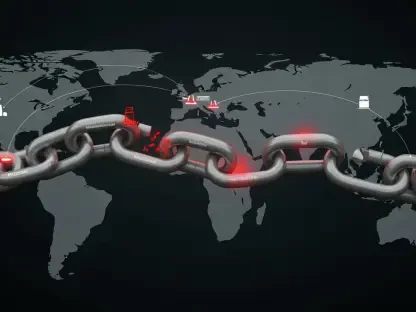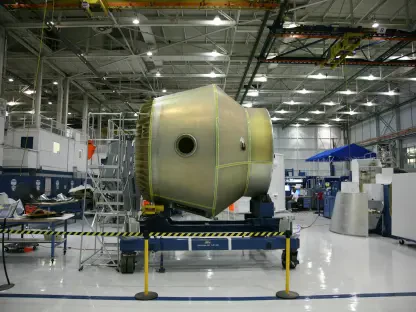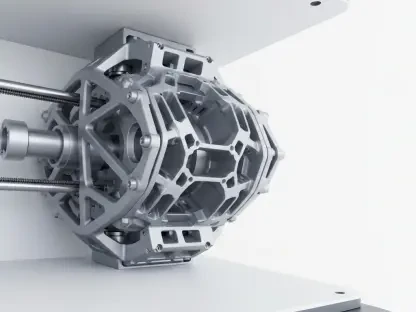The manufacturing landscape in Europe is undergoing a transformative shift, driven by the increasing integration of 3D printing technology. This revolution not only promises to alter traditional manufacturing practices but also anchors itself in the push for sustainability. By leveraging additive manufacturing processes, the industry shifts away from the archetypal “take-make-dispose” model. This method, long critiqued for its inefficiencies and excessive material waste, is being replaced by an approach that is both resource-efficient and environmentally considerate. With 3D printing, products are crafted meticulously and precisely, using only what is necessary, thereby drastically reducing material waste. Such innovation is already evident in European automotive industries, which are enthusiastically embracing the reuse of end-of-life vehicle plastics to produce new parts. This paradigm innovation is not just about technological advancement; it also reflects deeper environmental aspirations and a commitment to sustainable futures.
Advancements in Material Innovation
One of the more intriguing aspects of 3D printing’s contribution to sustainable manufacturing is how it propels material innovation. European researchers are at the frontier of developing advanced materials that are eco-friendly and cost-effective. By utilizing recycled plastics, plant-based polymers, and biodegradable materials as feedstock, the industry is reducing reliance on traditional materials. Projects like the CircularSeas initiative have showcased how maritime plastic waste, traditionally thought of as detrimental, is being transformed into valuable raw materials for 3D printing. This closed-loop system not only cuts down material costs but enhances the environmental credentials of partnered enterprises. Manufacturers interested in reducing their environmental impact find these developments particularly appealing as they strive to meet the rising consumer demand for environmentally responsible products. The material advancements thus not only underscore technological progression but also epitomize a more conscientious approach to production.
The emphasis on recycling and responsible material sourcing additionally aligns with Europe’s overarching sustainability objectives. The European Commission has set ambitious goals to mitigate environmental damage significantly by this decade, with 3D printing playing a pivotal role. Integrating recycling into 3D printing processes not only supports these objectives but also represents a significant economic opportunity. By pioneering new materials and integrating them into the manufacturing supply chain, Europe fortifies its position as a global leader in sustainable industrial practices. This strategy demonstrates how innovation and responsibility can coalesce to foster industry growth while maintaining ecological balance. Such initiatives challenge other regions to follow suit, setting a benchmark in the marriage of technology and sustainability.
Localized Production and the Circular Economy
Another pivotal shift enabled by 3D printing is the emphasis on localized production, which aligns with and facilitates the circular economy model. As manufacturers transition to distributed production networks, they are better equipped to respond swiftly to local demand, minimizing dependence on expansive storage facilities and extensive logistical networks. This agility not only improves supply chain resilience, especially in a time punctuated by global disruptions, but also reduces transportation emissions, aligning with environmental goals. Spanish manufacturers exemplify this trend: adopting distributed manufacturing processes has allowed them to remain nimble and environmentally conscious amidst changing market dynamics. Localized production sits harmoniously with Europe’s broader sustainability drive, underscoring the benefits of creating value chains that are both economically viable and environmentally responsible.
Furthermore, the circular economy concept, when intertwined with 3D printing, promises a reduction in resource extraction and waste generation. By encouraging the reuse and recycling of materials within production processes, the model shifts towards a sustainable future. As companies invest in these strategies, the European manufacturing landscape undergoes a reformation that prioritizes eco-responsibility. Such systemic changes have the potential to not only meet regulatory mandates but also present enterprises with substantial financial benefits through resource efficiency. Moreover, the imagination and implementation of such manufacturing models set a notable example globally. They offer a vision of future manufacturing that harmonizes economic prosperity with environmental stewardship, crafting a blueprint for other regions invested in sustainable platforms.
The Role of European Policy and Market Trends
Europe’s commitment to sustainable manufacturing through 3D printing is further amplified by supportive regulatory frameworks and market dynamics. European policymakers have continually emphasized the significance of integrating cutting-edge technologies like additive manufacturing in achieving sustainability targets. This policy-driven focus aligns with market trends, where environmentally friendly products and processes are gaining substantial traction among consumers. Through regulations encouraging innovation and investment in technology, Europe creates a conducive environment for industries to explore and integrate 3D printing. Such strategic alignment highlights Europe’s foresight in balancing industrial growth with ecological preservation, ensuring industries remain competitive and environmentally responsible.
Market trends complement these regulatory endeavors by highlighting consumer preferences for sustainable products. The rising demand for eco-friendly items propels enterprises to adopt innovative manufacturing methodologies that prioritize reduced carbon footprints and resource efficiency. The intersection of policy, market, and technology underscores an environment ripe with opportunities. As enterprises increasingly embed 3D printing into their operations, they not only adhere to regulatory standards but also cater to a market that prizes sustainability. This confluence creates a robust ecosystem where technological adoption is both a necessity and an advantage, driving Europe’s manufacturing industries toward a future where sustainability and success coexist seamlessly.
Envisioning a Sustainable Future
The European manufacturing landscape is experiencing a transformative shift, propelled by the growing incorporation of 3D printing technology. This evolution is not merely about altering traditional manufacturing practices; it’s also anchored in a pursuit of sustainability. By embracing additive manufacturing, the industry deviates from the traditional “take-make-dispose” framework, which has been criticized for inefficiency and high material waste. Instead, 3D printing adopts a method that is both resource-efficient and environmentally conscious. Products are meticulously crafted with precision, using only the necessary materials, which significantly reduces waste. This innovative approach is already noticeable in European automotive sectors, where companies are eagerly reusing plastics from end-of-life vehicles to make new parts. This paradigm shift underscores not just technological progress but also a deep-seated commitment to sustainable futures. It reflects a broader environmental aspiration to create a more responsible and enduring manufacturing ethos.









